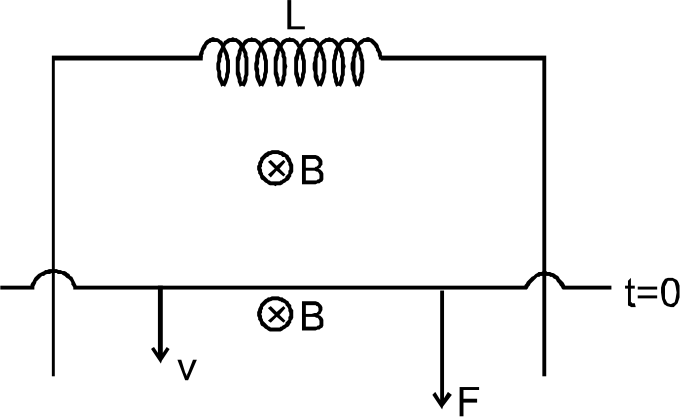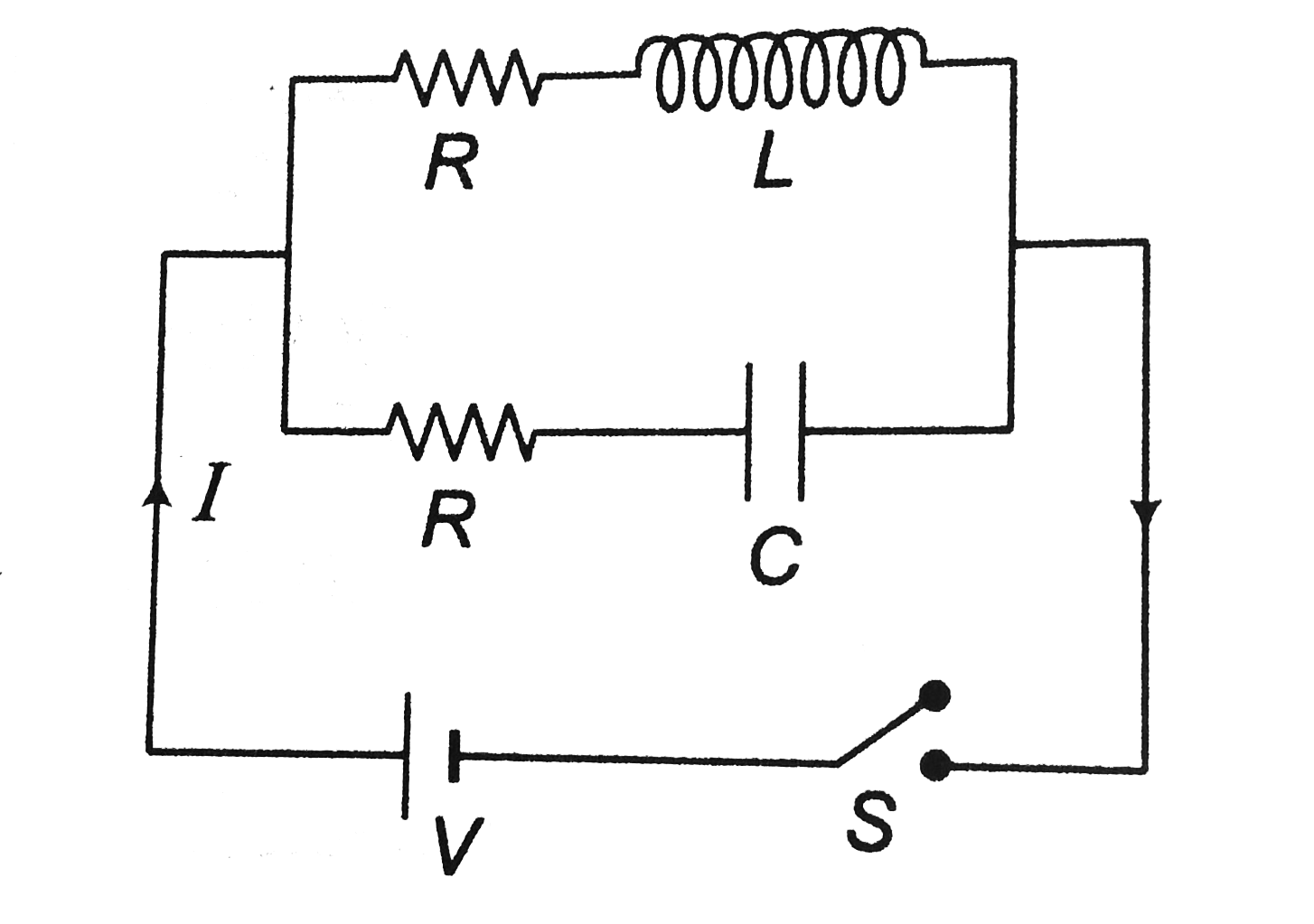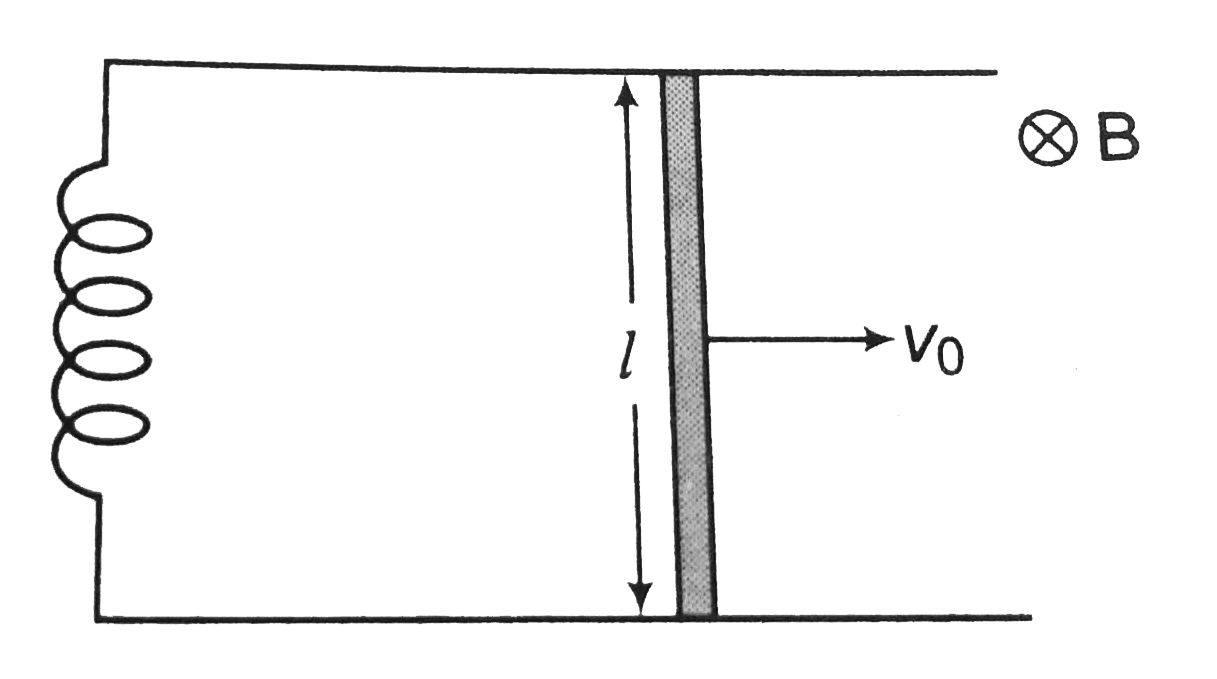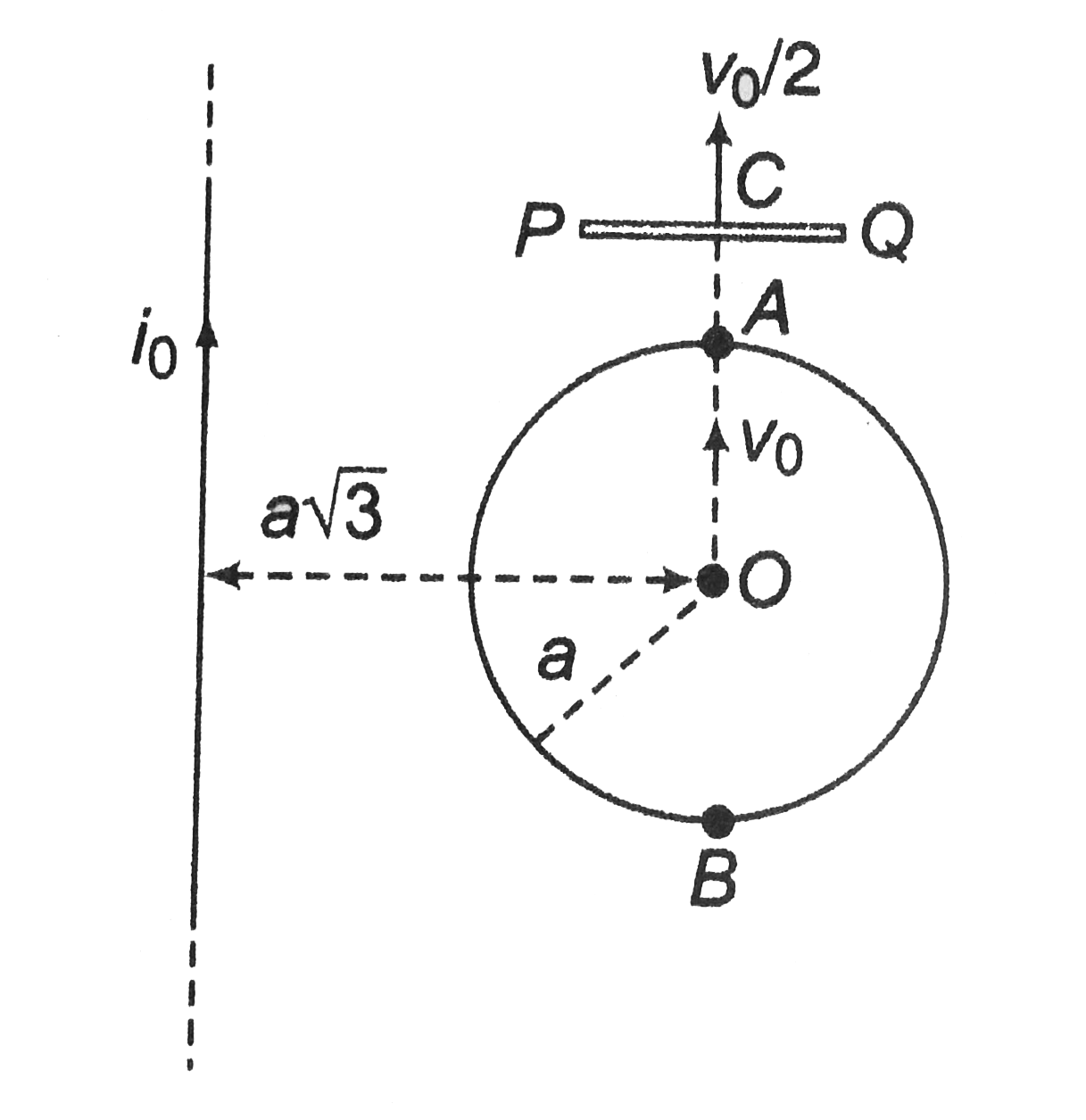As shown in the figure a variable force F is applied on conducting wire of length l such that its velocity remians. There is no resistance in any branch in the circuit. Consider the motion of wire from t=0 initially there is no current in inductor now when wire has covered a distance x (from initial position) Then at that time energy of inductor will be. (Neglect gravity)

independent of x
directly proportional to x
directly propportional to x2
directly proportional to x10
Current in circuit at any time t=(B/vLt)2
t=xv
So, E∝x2
Topper's Solved these Questions
Similar Questions
In the circuit diagram shown, initially there is no energy in the inductor and the capacitor, The switch is closed at t=0. Find the current I as a function of time if R=√L/C

View SolutionTwo ends of an inductor of inductance L are connected to two parallel conducting wires. A rod of length l and mass m is gien velocity v0 as shown. The whole sytem is placed in perpendicular magnetic field B. Find the maximum current in the inductor. (Neglect gravity and friction)

View SolutionConsider a L-R circuit shown in figure. There is no current in circuit switch S is closed at t = 0, time instant when current in inductor is equal to current in resistor 2R will be :

View SolutionA rod of length l is kept parallel to a long wire carrying constant current i . It is moving away from the wire with a velocity v. Find the emf induced in the wire when its distance in the wire when its distance from the long wire is x.
View SolutionA capacitor of capacitance Chas initial charge Q0 and connected to an inductor L as shown. Att=0 switch S is closed. The current through the inductor when energy in the capacitor is three times the energy of inductor is

View SolutionA rod of length l is kept parallel to a long wire carrying constant current i . It is moving away from the wire with a velocity v. Find the emf induced in the wire when its distance from the long wire is x.
View SolutionA conducting circular loop of radius a and resistance per unit length R is moving with a constant velocity v0 , parallel to an infinite conducting wire carrying current i0. A conducting rod of length 2a is approaching the centre of the loop with a constant velocity v02 along the direction 2 of the current. At the instant t=0, the rod comes in contact with the loop at A and starts sliding on the loop with the constant velocity. Neglecting the resistance of the rod and the self-inductance of the circuit, find the following when the rod slides on the loop.

(a) The current through the rod when it is at a distance of (a2) from the point A of the loop.
(b) Force required to maintain the velocity of the rod at that instant.
View SolutionIn Fig a rod of length l and mass m moves with an intial velocity u on a fixed frame containing inductor L and resistance R.PQ and MN are smooth conducting wires. There is auniform magnetic field of strength B. Initially, there is no current in the inductor. find the total cherge flows through the inductor by the time, velocity of rod becomes νf and the rod has travelled a distance x.

View SolutionA rectangular loop with a slide wire of length l is kept in a uniform magnetic field as shown in the figure. The resistance of slider is R. Neglecting self inductance of the loop find the current in the wonnector during its motion with a velocity v.

View SolutionAn equilateral triangle of side length l is formed from a piece of wire of uniform resistance. The current I is as shown in figure. Find the magnitude of the magnetic field at its centre O.

View Solution

